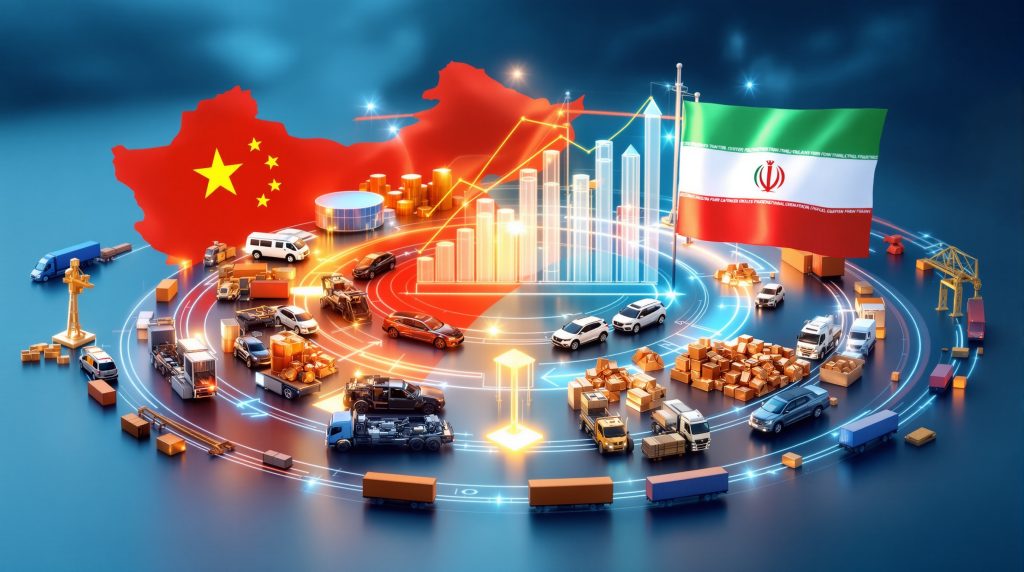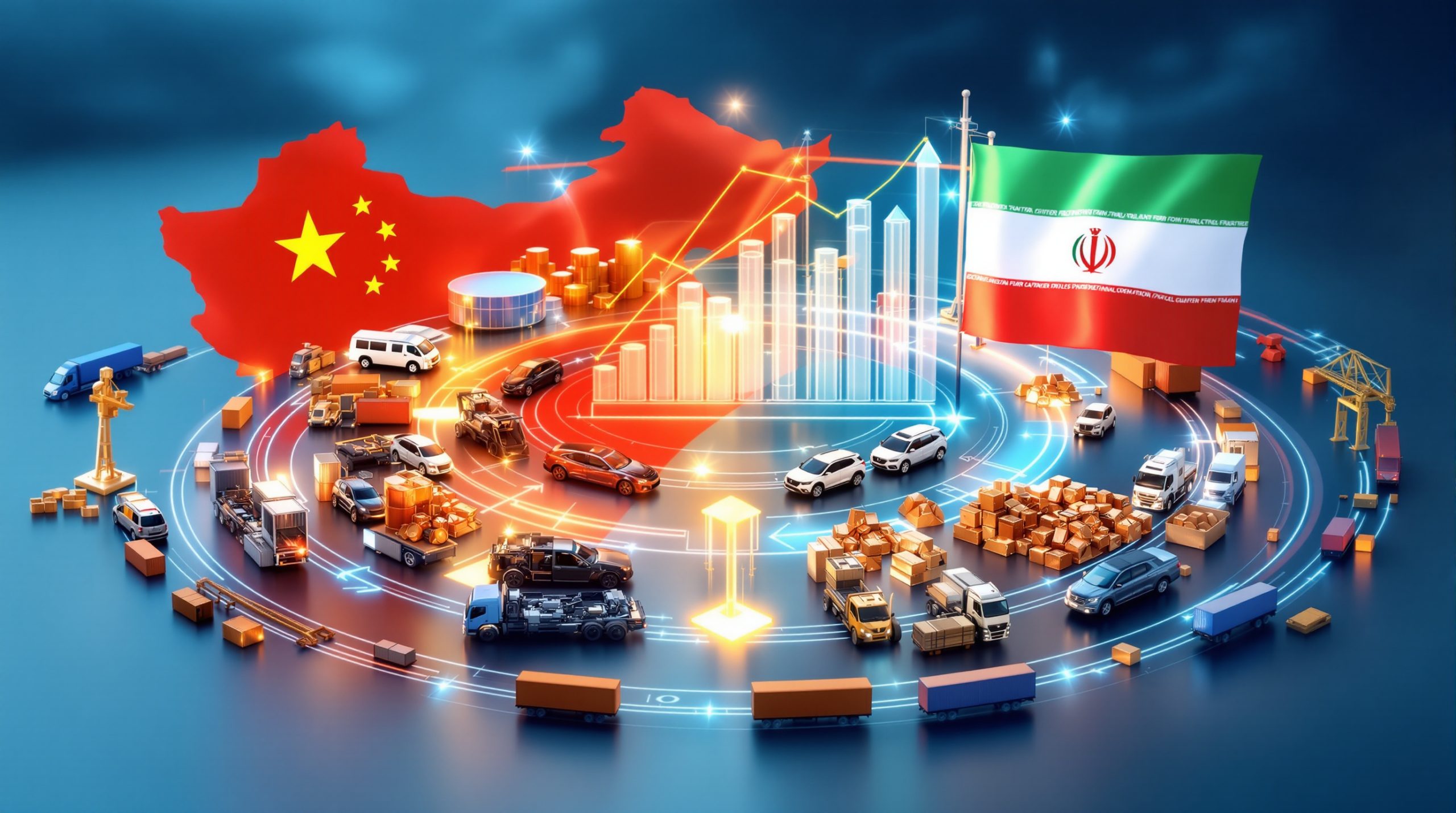Understanding the Revival of Barter in Global Trade
In an increasingly fragmented global financial system, one of history's oldest trading methods has made a remarkable comeback. Barter exchange—the direct trading of goods for goods without currency—has reemerged as sanctions proliferate across the international landscape, creating new pathways for trade between nations facing financial restrictions.
The modern barter economy isn't just a curiosity; it represents a sophisticated adaptation to geopolitical pressures. When traditional banking channels become inaccessible due to US-China Trade War Impacts, countries find alternative means to maintain vital commercial relationships. This revival highlights the resilience and adaptability of global trade networks in the face of constraints.
What is Driving the Return to Barter Economics?
Several factors have contributed to barter's resurgence in international commerce. Primary among these is the increasing use of sanctions as a foreign policy tool, which has created "financial islands" where conventional currency-based transactions become difficult or impossible.
For countries facing restrictions on banking transfers or currency exchanges, direct goods-for-goods transactions provide a practical workaround. This shift represents not just a tactical response but a strategic realignment of how international trade functions in contested geopolitical spaces.
How Sanctions Created New Trade Pathways
Western sanctions have significantly restricted Iran's ability to conduct normal international commerce through traditional banking channels. This isolation forced creative adaptations, with barter arrangements becoming increasingly sophisticated and formalized.
The financial restrictions imposed on Iran were originally intended to limit its economic activity, but instead pushed trade into alternative channels. Rather than stopping commerce entirely, sanctions have transformed how it occurs—creating elaborate networks of exchange that operate parallel to the conventional financial system.
The Mechanics of Modern Barter Trade
Modern barter arrangements are far more complex than simple one-to-one exchanges of goods. They typically involve multiple parties, sophisticated valuation mechanisms, and carefully structured logistics to ensure equivalence and timely delivery across international boundaries.
How the Chinese-Iranian Barter System Works
The exchange between China and Iran operates through a multi-step process involving several companies. Chinese automotive manufacturers supply vehicle components and technology to intermediary firms, which prepare semi-assembled "knocked down" vehicles for shipment to Iran.
The process begins with car parts rolling off production lines along China's Yangtze River. These components are sent to different factories for partial assembly before being containerized for export to Iran, where final assembly takes place locally. The completed vehicles are then sold under local brand names in the Iranian market.
In return, Iranian copper, zinc, and occasionally agricultural products like cashew nuts flow back to China, creating a circular trade system that bypasses conventional currency transactions. Chinese metals companies then distribute these materials to domestic industries, completing the exchange cycle.
The Strategic Importance of Resource Exchange
For China, these arrangements secure access to vital industrial metals at a time of increasing global competition for resources. Iranian copper and zinc directly feed China's manufacturing sector, reducing reliance on more volatile international markets.
For Iran, the barter provides essential manufactured goods while monetizing its substantial mineral wealth despite financial restrictions. Iranian consumers gain access to affordable vehicles priced around $7,000, significantly lower than many alternatives on the market.
This mutually beneficial arrangement illustrates how sanctions can reshape rather than eliminate trade relationships, creating new interdependencies between nations with complementary economic needs.
Key Players in the Cars-for-Copper Exchange
The barter system between China and Iran involves several prominent companies, each playing distinct roles in facilitating the complex exchange of goods across international boundaries.
Chinese Automotive and Metals Companies
Several companies from China's Anhui province play central roles in this barter system. Chief among them is Chery Automobile, which has become China's largest car exporter and the 11th-largest passenger vehicle manufacturer globally. With annual revenue reaching approximately 270 billion yuan ($38 billion) in 2024, Chery has established itself as a major international player.
On the metals side, Tongling Nonferrous Metals Group Holdings manages the distribution of incoming Iranian minerals. Located just 90 kilometers from Chery's headquarters in Wuhu, Tongling operates from a city with deep historical connections to China's copper industry, dating back to the founding of the People's Republic in 1949.
A third company based in Anqing city serves as a crucial intermediary, handling the preparation and shipping of semi-assembled vehicles. This arrangement creates a commercial buffer between the primary manufacturers and the Iranian market.
The Role of State-Owned Enterprises
State ownership features prominently in these arrangements, with provincial and municipal governments maintaining significant stakes in the key companies involved. Tongling's parent company is wholly owned by the Anhui provincial government, while Chery's largest shareholder is the Wuhu city government.
This governmental connection provides both stability and political cover for the barter operations. The involvement of state-owned enterprises reflects China's strategic approach to international trade, particularly with countries facing Western sanctions. By maintaining these commercial relationships through partially state-owned companies, China balances economic opportunities with diplomatic considerations.
The Scale and Impact of Barter Arrangements
While exact figures remain closely guarded, available information suggests these barter arrangements represent significant commercial activity with substantial impacts on both economies.
Quantifying the Exchange Volume
The barter trade between China and Iran involves transactions equivalent to hundreds of millions of dollars annually. Some arrangements have reportedly targeted exchanges of up to 90,000 vehicles per year, representing a substantial flow of goods between the two nations.
In March 2017, Chery's Iranian affiliate MVM owed the Chinese company 2.2 billion yuan ($325 million), its single largest exposure at that time. While more recent figures aren't publicly available, this historical data point suggests the significant scale of these arrangements.
The value proposition for consumers is clear: Chery's most popular models sell for approximately $7,000, making them accessible in markets where purchasing power may be limited. This affordability has helped establish Chery's local partner MVM as the most popular foreign car brand in Iran.
Comparison to Traditional Trade Flows
While significant, these barter arrangements represent only a fraction of the total China-Iran trade relationship, which reached approximately $9 billion in 2024. However, they highlight a growing trend toward alternative trade mechanisms in response to Trump Tariffs Global Impact.
For Chery specifically, markets under various sanctions have had varying importance over time. By 2016, Iran accounted for more than half of Chery's international sales. More recently, according to company disclosures, Iran and Cuba each generated no more than 0.5% of Chery's revenues in the past three years, while Russia accounted for as much as 25.5% of total revenue in 2023.
How Does Barter Circumvent Sanctions?
The success of barter arrangements in navigating sanctions depends on careful structuring to remain technically compliant with applicable regulations while achieving the desired commercial outcomes.
Legal Frameworks and Sanctions Compliance
Chinese companies can legally maintain business relationships with Iranian entities as long as they avoid using Western currencies or financial systems. By exchanging goods directly and denominating any necessary accounting in yuan or rials, these arrangements remain technically compliant with Chinese law while sidestepping the restrictions imposed by US Policy on Venezuela and other sanctioned nations.
The Chinese Foreign Ministry has consistently maintained that "China has always firmly opposed illegal unilateral sanctions. Normal cooperation between countries and Iran within the framework of international law is reasonable, just, and legal, and should be respected and protected."
This position creates the legal space for Chinese companies to continue trade with Iran, provided they structure their activities to avoid triggering secondary sanctions that could affect their operations in Western markets.
The Multiple Layers of Commercial Separation
To further insulate participants from potential sanctions exposure, these barter arrangements typically involve multiple corporate entities and intermediaries. This complex structure creates distance between the primary manufacturers and the sanctioned market, reducing direct exposure to regulatory scrutiny.
Chery, for example, doesn't barter directly with Iran but sells parts and technology to intermediary companies that handle the final preparation and shipping. Similarly, on the return side, metals and other goods pass through multiple hands before reaching their final destination.
Legal advisers to companies engaging in these arrangements typically assess that such activities "do not represent a primary sanctioned activity or a violation of US primary sanctions and the secondary sanctions risk is relatively limited," as noted in Chery's IPO disclosure documents.
The Historical Context of Barter Resurgence
The current revival of barter trade represents a return to practices that were once more common in international commerce, particularly during periods of geopolitical division and economic transition.
The Evolution of International Barter
Barter trade was relatively common during the Cold War era and the post-Soviet transition period when hard currency was often scarce or inaccessible. Commodity traders facilitated exchanges like Cuban cigars for milk powder and Uzbek cotton for corn, creating parallel systems of commerce outside conventional currency markets.
The practice declined significantly during the 1990s and 2000s as dollar-denominated global trade expanded, creating a more integrated financial system where direct currency transactions became the norm. However, as sanctions have proliferated in recent years, the pendulum has begun to swing back toward alternative arrangements.
The current Chinese cars for Iranian copper exchange began approximately seven years ago, coinciding with the escalation of US sanctions during President Trump's administration. This timing illustrates how quickly commercial practices can adapt to changing geopolitical circumstances.
Other Contemporary Barter Arrangements
The China-Iran cars-for-copper exchange is not unique. Similar arrangements have emerged between various sanctioned economies and their trading partners. Examples include Sri Lanka trading tea for Iranian oil, and Beijing sending auto parts to Iran in exchange for pistachios.
Russia's economy has also increasingly turned to barter following the extensive sanctions imposed since 2022. The country's economy ministry even published a guide to barter trade in 2024, formalizing and encouraging the practice as a response to financial restrictions.
These various exchanges demonstrate how barter has evolved from an historical curiosity to a practical tool for maintaining commercial relationships in the face of financial constraints.
Business Challenges Created by Barter Arrangements
While barter arrangements can enable continued trade despite sanctions, they create significant operational and strategic challenges for the businesses involved.
Financial Reporting Complications
For companies involved in barter trade, financial reporting becomes significantly more complex. Valuing non-monetary exchanges, accounting for transaction timing differences, and explaining these arrangements to investors all present challenges, particularly for companies seeking international investment or public listings.
These complexities were evident in Chery's recent initial public offering (IPO), which raised $1.2 billion in Hong Kong. Notably, no Western banks led Chery's IPO, partly due to concerns about disclosures regarding business with sanctioned countries. JPMorgan Chase initially participated but dropped out before signing a formal mandate, reportedly due to concerns about Chery's disclosures, including those related to sanctioned markets.
The company's eventual 5% stake sale was supported primarily by Chinese investors, with the largest single IPO investor being a Chinese state-owned investment vehicle that took approximately one in every seven shares offered.
Investor and Market Perception Issues
Participation in barter arrangements with sanctioned countries can create perception problems for companies seeking to expand their global presence. Even when technically legal under domestic law, these relationships may deter international investors or partners concerned about indirect sanctions exposure or reputational risks.
Companies must carefully balance the commercial opportunities in sanctioned markets against the potential impact on their broader business interests and growth strategies. This tension is particularly acute for firms with global ambitions, as evidenced by Chery's pledge in its IPO prospectus to scale down its business in Russia to "negligible" levels by 2027 and its statement that it had already ceased operations in Iran and Cuba by the end of 2024.
The Future of Sanction-Driven Barter
As geopolitical divisions persist and sanctions remain a primary tool of international pressure, barter trade appears likely to continue evolving as a response to financial restrictions.
Will Barter Become More Prevalent?
As geopolitical tensions continue and sanctions remain a primary tool of international pressure, barter arrangements are likely to persist and potentially expand. Countries facing restrictions may develop increasingly sophisticated exchange mechanisms to maintain vital trade relationships outside the conventional financial system.
The proliferation of sanctions in recent years has created more "financial islands"—economies partially disconnected from the global financial system. This fragmentation naturally encourages alternative trade mechanisms, with barter representing one of the most straightforward options.
While the total volume of global barter trade remains relatively small compared to conventional commerce, its strategic importance is growing, particularly in sectors deemed essential to US Mineral Production Order or economic development.
Technology's Role in Modernizing Barter
While today's barter arrangements often involve physical goods exchange, emerging technologies like blockchain and digital currencies may eventually create new hybrid systems that combine the sanctions-resistance of barter with the efficiency of modern financial technology.
Central bank digital currencies (CBDCs) and other technological innovations could potentially address some of the inefficiencies inherent in traditional barter arrangements, making them more attractive alternatives to dollar-denominated trade. These developments might eventually blur the line between barter and conventional commerce, creating new models for international exchange that are less vulnerable to sanctions.
The evolution of these systems will likely be shaped by both technological advancement and geopolitical competition, as nations and businesses seek to balance economic efficiency with strategic autonomy.
FAQs About Sanctions and Barter Trade
Is Barter Trade Legal Under International Sanctions?
Barter trade itself is not prohibited by international sanctions. However, sanctions typically restrict specific entities, individuals, or sectors from accessing particular financial systems or markets. Companies must navigate complex legal frameworks to ensure their barter arrangements don't violate applicable restrictions.
The legality depends primarily on:
- The specific sanctions in place and their jurisdictional scope
- The nationality and ownership structure of the companies involved
- The nature of the goods being exchanged and whether they fall under restricted categories
- The currencies used for any supplementary transactions or accounting purposes
Legal advisers typically assess that properly structured barter arrangements present limited sanctions risk, especially when conducted entirely outside Western financial systems.
How Do Companies Value Goods in Barter Arrangements?
Valuation in barter arrangements typically involves establishing approximate market equivalence between the exchanged goods. Companies may use benchmark prices for commodities like copper or reference domestic market values for manufactured goods to ensure roughly balanced exchanges.
For commodities with established global markets, like US-China Copper Prices and zinc, international benchmark prices provide relatively straightforward valuation mechanisms. For manufactured goods like vehicles, companies typically use production costs plus a reasonable margin to establish fair exchange ratios.
These valuations must also account for transportation costs, quality differences, and timing considerations, adding layers of complexity to the negotiation process.
What Other Countries Are Engaged in Significant Barter Trade?
Beyond China and Iran, countries including Russia, Venezuela, Cuba, and various nations facing currency shortages or sanctions have increasingly turned to barter arrangements. These exchanges cover diverse sectors from energy and minerals to agricultural products and manufactured goods.
Since the imposition of extensive sanctions in 2022, Russia has significantly expanded its use of barter arrangements, with its economy ministry formally promoting the practice. Similarly, Venezuela has engaged in oil-for-goods exchanges with various trading partners as alternatives to dollar-denominated sales.
While the specific mechanisms vary, these arrangements all share the common feature of reducing reliance on Western-dominated financial channels, creating alternative commercial pathways that can withstand sanctions pressure.
Conclusion: The Resilience of International Trade
The revival of barter trade in response to sanctions highlights the remarkable adaptability of international commerce. Despite increasingly complex restrictions on conventional financial transactions, countries and companies continue to find ways to exchange goods and services, albeit through more elaborate mechanisms.
The cars-for-copper exchange between China and Iran demonstrates how sanctions often reshape rather than eliminate trade relationships. By adapting ancient commercial practices to modern circumstances, trading partners have created sustainable channels for continued commerce despite significant external pressures.
As geopolitical competition intensifies and the global economy continues to fragment along political lines, these alternative trade mechanisms are likely to become increasingly important features of the international commercial landscape. The evolution of barter arrangements represents not just a tactical response to immediate challenges but a strategic adaptation to a changing global order.
While the financial system remains predominantly organized around dollar-denominated transactions, the persistence and growth of barter trade suggests the emergence of parallel commercial structures that may gradually reshape how international business is conducted in contested geopolitical spaces.
Searching for the Next Big Mineral Discovery?
Discover how major mineral finds can generate significant market returns by exploring Discovery Alert's dedicated discoveries page, where our proprietary Discovery IQ model helps investors identify actionable opportunities before the broader market.




